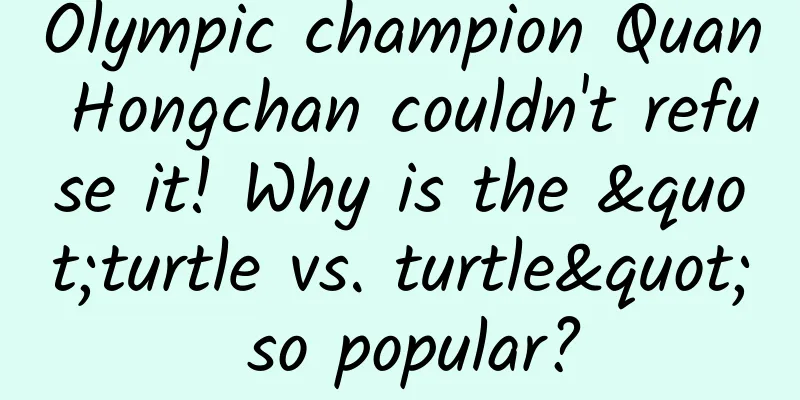Are brightly colored clothes toxic? Do dark-colored clothes contain formaldehyde? Should I get rid of these clothes?

|
As we all know, colorful clothes are made through dyes, and most of the dyes used for clothes are chemical dyes. So there are rumors that textile dyes are toxic , especially dark and brightly colored clothing, because chemical dyes contain certain elements that are not good for the body . In addition, dark dyes contain formaldehyde , and brightly colored clothes are prone to contain decomposable aromatic amine dyes that are banned by the country. Consumers can easily buy "toxic" clothes if they are not careful. So, are dark and bright clothes healthy? Should we continue to wear them? Let's start from the beginning. 01 The increasing popularity of synthetic dyes This rumor touches on two issues regarding textiles: one is whether the dyes used in textiles are toxic, and the other is the formaldehyde problem in clothing. Let's first understand the two important processes in textile production: "printing and dyeing" and "finishing". The printing and dyeing process gives textiles rich colors and patterns, and various dyes are used in the processing process; the finishing process can improve the appearance and internal quality of textiles, improve performance or give textiles some special functions, and various finishing auxiliaries are also used in the processing process. Nowadays, the chemical synthesis industry has been fully developed. Chemical synthetic dyes have almost replaced traditional plant dyes in the textile field because of their lower cost, more complete color spectrum, better dyeing and fixation properties than plant dyes. So, will chemical dyes affect our health? Brightly colored dyes | Tuchong Creative 02 Are dyes toxic? National standards protect you First, although there are many types of chemical dyes, they are not toxic in themselves. They react chemically with textile fibers during the printing and dyeing process to achieve the purpose of dyeing, and they are not toxic after combining with the fibers. The largest category of compound dyes is azo dyes. Azo dyes are a type of dye that contains azo groups in their molecular structure. There are more than 3,000 varieties, and they are not toxic in themselves. A small number of azo dyes will mix with the body's metabolites when worn, and will undergo a reduction reaction under certain conditions, releasing carcinogenic aromatic amines that harm human health. However, this type of azo dye has long been banned by national mandatory standards . The European Union, North America and other countries also have clear regulations and textile standards that prohibit the use of azo dyes. Printing and dyeing companies must follow mandatory standards to control and ensure the quality and safety of their products during the production process. Clothing products that violate the regulations and use banned dyes cannot be sold. Newly purchased textiles will also fade when they are washed for the first time. These floating colors can be removed by washing and are harmless to the body, so there is no need to worry too much. 03 Formaldehyde? There are also strict restrictions Formaldehyde in textiles usually comes from resin finishing agents, softeners, color fixatives, flame retardants, waterproofing agents, etc. used in the finishing process. The use of these finishing auxiliaries can improve the performance of the fabric or give it corresponding special functions . At present, the textile industry has gradually replaced formaldehyde-containing auxiliaries with formaldehyde-free or low-formaldehyde finishing auxiliaries to reduce the risk of excessive formaldehyde in textiles after finishing. In addition, formaldehyde scavengers are also used in the finishing process of textiles to effectively reduce the formaldehyde content of the finished product to meet the above-mentioned factory standards . The content of formaldehyde in textiles is also strictly regulated and required in national standards . The national mandatory standard GB18401-2010 "National Basic Safety Technical Specifications for Textile Products" stipulates that the formaldehyde content of Class A textiles is ≤20mg/kg, the formaldehyde content of Class B textiles is ≤75mg/kg, and the formaldehyde content of Class C textiles is ≤300mg/kg; among them, textile products for infants and young children should meet the requirements of Class A, products that directly contact the skin should at least meet the requirements of Class B, and products that do not directly contact the skin should at least meet the requirements of Class C. If you are concerned about the small amount of formaldehyde remaining in textiles, you can also wash and dry the newly purchased textiles and clothing before wearing them. Because formaldehyde is easily soluble in water, the remaining formaldehyde can be removed by washing . Author: Song Lidan, Engineer of Industrial Research Department, China Textile Construction Planning Institute Review | Zhang Jie, Chief Engineer, China Textile Construction Planning Institute This article is jointly produced by the "Science Rumor Refutation Platform" (ID: Science_Facts) and the China Textile Construction Planning Institute. Please indicate the source when reprinting. The pictures in this article are from the copyright gallery and are not authorized for reproduction. References: National Standard GB18401-2010 "National Basic Safety Technical Specifications for Textile Products" |
<<: Typhoon "Olu" is coming! These areas will experience strong winds and heavy rains!
>>: Red-billed Oxpecker: "Hey, big guy, someone's coming, run!!"
Recommend
What is the market price for a bottle of 52-degree platinum cellar-aged wine (Kweichow Moutai Distillery)?
How much is the market price of a bottle of 52-de...
Cocos 2d-JS Chinese version API documentation is officially launched
Open source engines are naturally sharing-minded....
How to write a hot topic title? Share 5 tips!
Hot topic titles have always been one of the more...
How can a small piece of "skin" be able to "tell stories of the ages in one breath and command millions of soldiers with both hands"?
Chengdu is a place you won't want to leave on...
How fast is the Earth moving on a cosmic scale?
The earth, this blue planet, not only dances on i...
What is the difference between the Lunar South Pole Station and the Earth's South Pole Station?
China has five scientific research stations at th...
Singapore bans milk tea advertising. Can drinking milk tea cause diabetes?
Before answering this question, let's take a ...
How to use Apple mobile phone and watch together to open touch experience?
A few days ago, a plastic back cover model of wha...
In-depth information | The most comprehensive guide to bidding OCPC advertising is online
Bidding OCPC is based on the long-term accumulati...
Relearn data structures and algorithms
Relearning Data Structure and Algorithm Resources...
Ruipu Lanjun released a series of big moves at the IAA! The Wending family products, European development strategy, and ESG carbon neutrality route were all launched
The full matrix Wending family series of products...
What you need to know about Photoshop CC for iPad
Adobe has confirmed that it will launch Photoshop...
How can a novice quickly get started writing promotional copy?
01. How can a novice quickly get started in writi...
How do you keep the apples that Wang Yaping displayed in the space station fresh?
recently Photos by Zhai Zhigang and Ye Guangfu ——...
Neutrinos are "ghosts"? Why go 700 meters underground to catch them?
Recently, according to the Chinese Academy of Sci...









